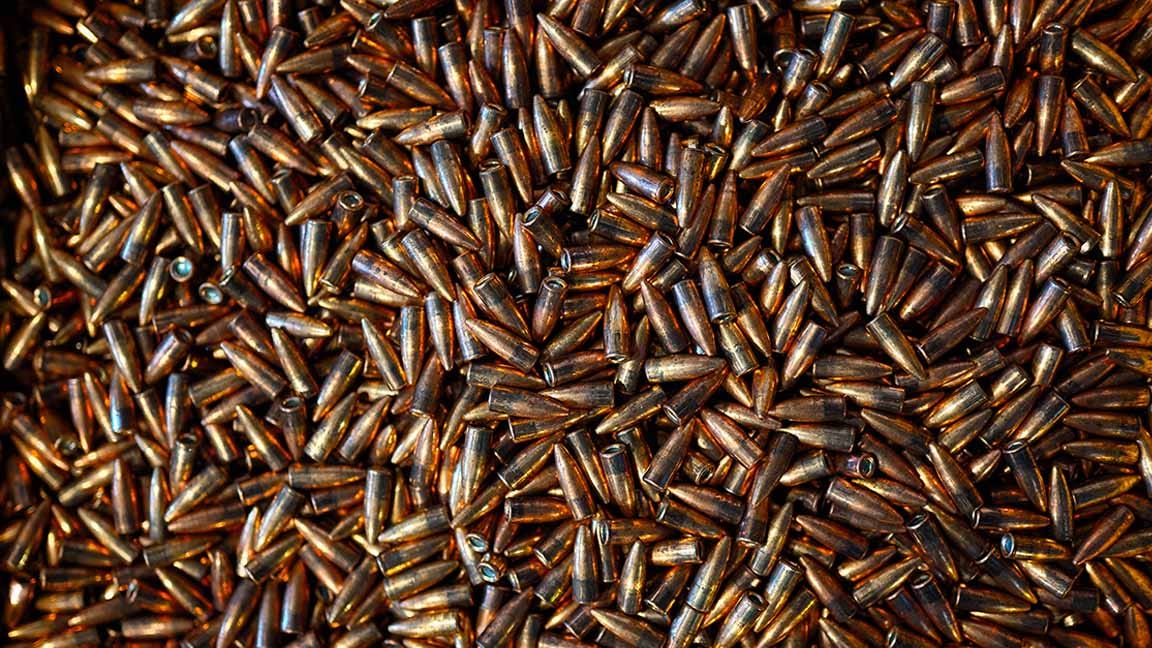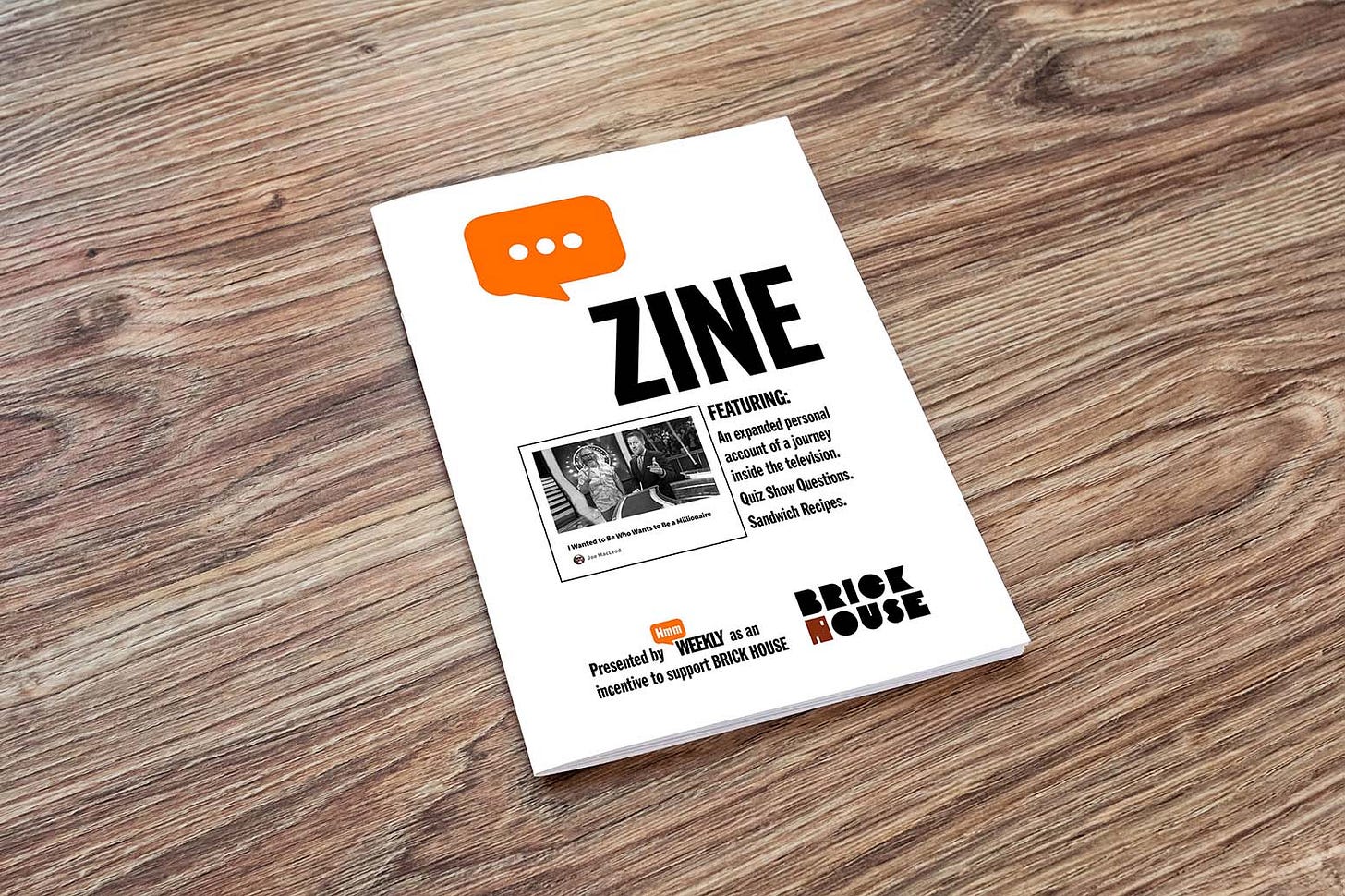What Is There to Learn From Pictures of Gun Slaughter?
LAST WEEK, THE Washington Post published photos from some of the places around the United States where AR-15 rifles have been used to massacre people. It was part of an ongoing series from the Post called "American Icon," focusing on the ubiquity of the AR-15 and the horror it has spread through every part of American life.
Sally Buzbee, the Post's executive editor, wrote a note to accompany the dynamic scroll-through presentation of the photos, explaining why the Post had sought out the images and published them:
[B]ecause journalists generally do not have access to crime scenes and news organizations rarely if ever publish graphic content, most Americans have no way to understand the full scope of an AR-15’s destructive power or the extent of the trauma inflicted on victims, survivors and first responders when a shooter uses this weapon on people.
I didn't really know what I wanted to get out of the pictures, but I scrolled the whole page, watching them come and go. Would seeing them make a difference? It was true, as Buzbee wrote, that people have not been able to see them. And the not-seeing had certainly not made any difference.
Many, many massacres ago now, Alex Pareene wrote that the gun-control movement needed to copy the fanatical outlook and vicious tactics of the anti-abortion movement:
It also means going all-in on gore. It means waving gruesome photos of dead children in the faces of Republican legislators, gun store owners, and gun manufacturers. This is where the conservatives shine. Good liberals are too squeamish to look past the police tape. They worry that if they focus, up close and without flinching, on the goriest details of the carnage, it’ll glorify violence, or worse, inspire future killers. Maybe, but it’ll also scare the shit out of future killers’ mothers before they fill their houses with guns, to feel safe.
The Post's presentation was far from wallowing on the details of the carnage. Only one of the photos featured visible bodies—at a distance, scattered on grassy ground in Las Vegas in 2017. How many of the 60 dead were in the frame? What fraction of the toll? The thought of trying to count them felt disrespectful. Then the whole concept of disrespecting bodies that had been grotesquely violated in public started to slide out from under my attempt to think about it.
Besides the Las Vegas photo, there was one image—repeated at the top and the bottom—of white body bags receding into the darkness down both sides of a hallway at Robb Elementary School in Uvalde. Everything else depicted a scene with from which the bodies had been removed, or the parts of the scene without bodies in it: walls riddled with bullet holes, overturned furniture, dozens of shell casings, dozens of evidence markers (investigators in the Aurora movie theater, the Post noted in a caption, "ran out of evidence markers and used business cards instead").
There was still blood, though, pooling and clotting on the tile floors or carpets. Blood soaked into lost shoes and clothing. Streaks of blood where the bodies had been dragged away.
Would even worse photos have had a greater effect? Personally, for me, there's something about photos of dead bodies in the news that my eye can't or won't rightly process. More often than not, when a publication decides to show me the unconcealed truth of death, I have trouble picking up the figures involved as human. It's not that I can't see they're formally human-shaped, but the flash of recognition isn't there.
The destruction from the AR-15 leaves the people who see it firsthand baffled, too. "I thought I observed a pile of dirty laundry," the Post quoted one state trooper in Newtown as saying, about seeing a pile of what had been school children. Another Newtown trooper: "I tried to count the number of dead between rooms #10 and #8, but my mind would not count beyond the low teens and I kept getting confused."
The Post's presentation also included videos taken in the middle of shootings, of people screaming and scattering in terror. I scrolled past those without stopping. It seems completely obscene to watch and listen to anyone in that moment of vulnerability. It's also something my own kids have been rehearsing, through lockdown drills, all through their school careers.
Is it an act of bearing witness to see more of it? I was already, I think, fully horrified by the idea of 20 children or 19 children, and various numbers of their teachers, being torn apart by the repeated application of 1,300 foot-pounds of force. Or moviegoers, or a church congregation, or shoppers trying to buy groceries. I don't know that I need to do something extra to understand that these atrocities are atrocities.
What got through to me, from the photos, was noticing that underneath the blood, the classrooms were a little grimy. Just a touch, the kind of school grime that comes with a dozen or two little kids coming in and out, day after day, grabbling and handling things. The classroom organizers and accessories were just this side of cluttered. My imaginary versions of these schools had for whatever reason been pristine. The real ones were lived in, right up to the moment so many people died in them.
What else happened, on other ordinary days? Someone went to work at the gun factory to make the gun. Someone packed the gun for sale. Someone designed the packaging to catch the eye, gave the snake logo on the Bushmaster box the right degree of sneer. Someone brainstormed the ads—"CONSIDER YOUR MAN CARD REISSUED"—pitching the gun to weaklings and losers as a source of power, agency, redemption. The revenue line went up.
Some of the bullets fired into people at Uvalde—and Aurora, and Parkland, and Buffalo, and so on—came off the production lines at the Lake City Army Ammunition Plant in Independence, Missouri, the New York Times reported last week. The Lake City factory, the Times wrote, "has made nearly all the rifle cartridges used by the U.S. military since it pulled out of Vietnam." And, it added, it "has also pumped billions of rounds of military-grade ammunition into the commercial market."
The plant has produced that ammunition while being run by various private contractors, supervised by the United States military. "Over the last two decades," the Times reported, citing an Army spokesperson, "the government has invested more than $860 million to improve and repair the plant and expand its capacity." The purpose, another military official told the Times, is "to ensure we have government-owned production capacity for military-specific items that we can surge in case of a conflict."
That is, to keep the plant up and running, should a new foreign intervention or arms deal require the government to buy more bullets, the government underwrote an effort to redirect its output to the domestic civilian market:
In 2009, Army officials added a clause to the Lake City contract requiring a capacity of 1.6 billion rounds. Keeping the plant hot with commercial sales was the most obvious solution because its machinery, once stopped, could take weeks or longer to come back online and continuous production would also keep workers at the ready, according to interviews.
It's hard to imagine a more literal case of the military-industrial complex turning its capacity for violence back on the imperial core. Both sides of the public-private partnership accepted that decision: more bullets into the world, better armor-piercing ones, more, more, more. The Parkland school shooter, using Lake City ammunition, fired 139 shots in 6 minutes and 40 seconds. One point six billion bullets is more than 11.5 million times that many. One year's supply from the factory could keep a gun shooting at that rate for 146 years and 4 months.
Every bullet from the Lake City Army Ammunition Plant is made to kill a human being. Even if most of them—nearly all of them—are sprayed at shooting ranges, that's not what they're for. What they're for is killing. The more bullets are out there, the more killing there will be.
Amazingly, for our age, this truth seemed to have stirred some of the people's consciences, or at least their conscousnesses of guilt. “[W]e are going to have a hard time in explaining it to the general public,” the Times quoted the CEO of the contractor who ran the plant in 2008 saying, as the plant prepared to expand into civilian sales.
Nevertheless, everyone chose to do it. On various ordinary days, while children smudged up the walls in their classrooms, while people rattled their grocery carts down the aisles, other people went to work in the factory and made the bullets. They got bored, took a break, maybe talked, bullet-maker to bullet-maker, about how the Chiefs were doing. Someone in an office put the number of bullets into a spreadsheet, with the number of bullets from the day before. Someone in an office logged the hours into the payroll, a good ordinary day's work. Tomorrow there would be more bullets to make.
WEATHER REVIEWS
New York City, November 19, 2023
★★★★★ Neither the blue jay screaming right nearby at dawn nor the airplane passing in the distance was enough to prevent another two hours of sleep. The dripping golden foliage of the honeylocust had just thinned past its peak, but the sweetgum was still wildly speckled in yellow on green and the dogwood out back had suddenly become a riot of orange and russet. The sun was not so low it couldn't bounce around the cross street. A crescent moon, almost fattened to a half, was pale in the daylight sky. Leaves were crumbling to dusty leaf mold on the path by the Pool. White-throated sparrows rustled in the leaves, all but vanishing in the stillness between hops. A man in a troubadour costume strummed a lute and sang earnestly. A squirrel sat at one end of a bench and a woman at the other, with pistachio shells between them.
EASY LISTENING DEP’T.
SANDWICH RECIPES DEP’T.
WE PRESENT INSTRUCTIONS for the assembly of select sandwiches from Light Entertaining: A Book of Dainty Recipes for Special Occasions, edited by Helena Judson, Published in 1910. This book is in the Public Domain and available at archive.org for the delectation of all.
SALAD SANDWICHES
Under the head of salad sandwiches all forms of meat may be placed on lettuce leaves, put between two slices of bread and tied together with ribbon, or held by means of a toothpick, or the slices may be pressed together, and the crusts trimmed. Romaine, sorrel, endive, and escarole may be substituted for lettuce in making these salad sandwiches.
DILL AND CELERY SANDWICHES Cover thinly sliced white or rye bread with a mixture made of chopped dill pickles and celery. Moisten with salad dressing.
OLIVE SANDWICHES Take equal parts of plain and stuffed olives. Put through a meat grinder, mix with mayonnaise and spread.
RIPE OLIVE AND PIMENTO SANDWICHES Take equal quantities of ripe olives, stoned, and canned pimentoes (sweet red peppers). Chop very fine.
ONION SANDWICHES Select very mild onions. Slice very thin and lay in ice water for a half hour before using. Season with pepper and salt. These are delicious as a filling for Boston brown bread sandwiches.
If you decide to prepare and attempt to enjoy a sandwich inspired by this offering, be sure to send a picture to indignity@indignity.net.
MARKETING DEP'T.
ATTENTION, BOOK SHOPPERS! We are pleased to announce that we have SOLD OUT the first printing of 19 FOLKTALES. A second printing, which corrects the unorthodox (collectible!) spine alignment of the first edition, is underway, but new orders may be delayed even more than they are under our usual hand-fulfillment system. Some signed copies are available as premiums for Kickstarter supporters of the new FLAMING HYDRA publishing enterprise, which we encourage you to support as it has successfully satisfied its initial kick-starting and is now well into a “stretch drive.”
Totally not sold-out: HMM WEEKLY MINI-ZINE, Subject: GAME SHOW, Joe MacLeod’s account of his Total Experience of a Journey Into Television, expanded from the original published account found here at Hmm Daily. The special MINI ZINE features other viewpoints related to an appearance on, at, and inside the teevee game show Who Wants to Be A Millionaire, available for purchase at SHOPULA.
Thanks for reading INDIGNITY, a general-interest publication for a discerning and self-selected audience. We depend on your support!










